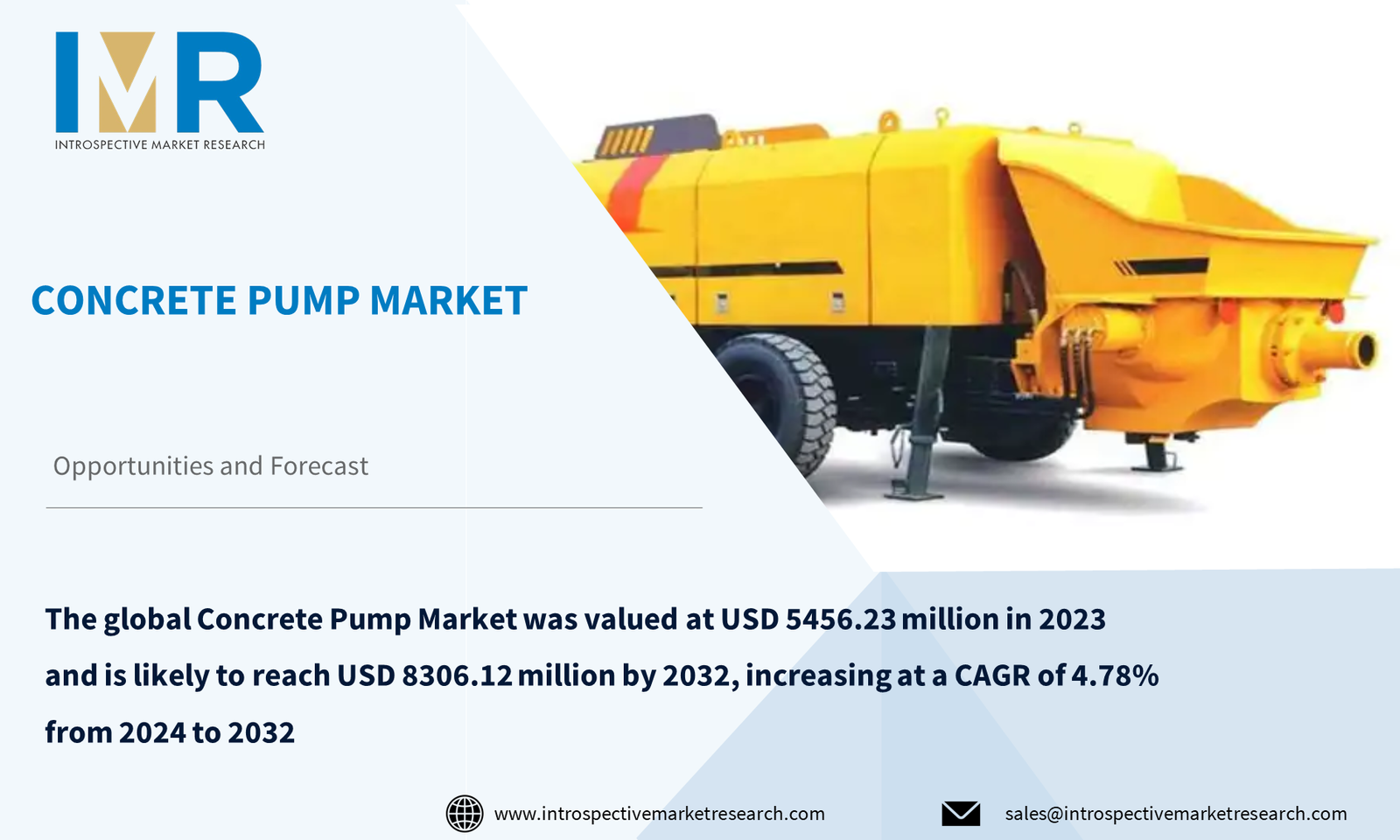
Drone Flight Controller System Market Overview:
According to a new report published by Introspective Market Research, titled, “Drone Flight Cotroller System by Application and Packaging Type: Global Opportunity Analysis and Industry Forecast, 2023–2032,”
Drone Flight Controller System Market Size Was Valued at USD 7703.12 Billion in 2023 and is Projected to Reach USD 16052.19 Million by 2032, Growing at a CAGR of 8.5% From 2024-2032.
A drone flight control system combines hardware and software to manage UAV navigation and stability. It utilizes sensors and GPS to maintain flight stability, respond to commands, and enable precise positioning for tasks like mapping and inspection. User interfaces facilitate configuration, telemetry monitoring, and flight path planning, crucial for diverse drone applications. The drone flight control system market is experiencing growth propelled by the widespread adoption of drones across diverse industries. Industries such as agriculture, construction, infrastructure inspection, and public safety are increasingly leveraging drones for various applications. Government policies that support and regulate drone operations also contribute to market expansion, fostering a conducive environment for drone use. Manufacturers stand to benefit from advancements in electric propulsion and autonomous capabilities, driving innovation and meeting market demands for sophisticated flight control systems. With the increasing demand for precise and reliable navigation capabilities, flight controller systems are integrating advanced positioning technologies such as Real-Time Kinematic (RTK) GPS and Global Navigation Satellite System (GNSS) augmentation. These technologies enable centimetre-level accuracy in positioning, essential for applications such as aerial mapping, surveying, and precision agriculture.
Advanced Navigation and Autonomy create a potential opportunity for the market to grow. The escalating need for drone flight controller systems with advanced navigation features such as obstacle avoidance, precise waypoint navigation, and autonomous flight modes is evident. This demand underscores the importance of developing innovative algorithms and technologies to augment drone autonomy. Such advancements not only cater to the evolving requirements of various industries but also present substantial opportunities for innovation and growth. By focusing on enhancing drone autonomy, developers can address challenges related to navigation in complex environments and enable drones to operate more efficiently and safely. These advancements are crucial for unlocking the full potential of drone technology across a wide range of applications, including surveillance, delivery services, and infrastructure inspection. As research and development efforts continue to push the boundaries of navigation and autonomy, the drone industry stands poised to benefit from improved capabilities and expanded use cases. Ultimately, the pursuit of advanced navigation and autonomy in drone flight controller systems promises to drive progress and unlock new possibilities in aerial robotics.
Technological advancement and digitalization are critical market drivers for drone flight controller systems because they improve functionality, efficiency, and safety. Advanced technologies such as artificial intelligence, machine learning, and sensor integration allow for accurate control and navigation of drones in difficult settings. Digitalization allows for real-time data transfer, remote monitoring, autonomous flying, and seamless interface with other systems. Another component is downsizing and the proliferation of smart devices has improved the accessibility and usability of drone control systems. These developments benefit a wide range of businesses, including agriculture, construction, security, and filmmaking, resulting in an increased need for sophisticated drone controllers. Furthermore, the development of regulatory frameworks to accommodate technology breakthroughs fuels market growth. Finally, technical development and digitalization increase the performance of
Global Drone Flight Controller System Market Segmentation
The Type segment is further classified into Fixed-Wing Drone, Rotary Wing Drone, and Hybrid Wing Drone. Among these, the Rotary Wing Drone sub-segment accounted for the highest market share. In 2022, the rotary wing drone segment had the biggest market share. These unmanned aerial vehicles, often known as multirotor drones, have a different design and flight characteristics when compared to fixed-wing drones. These aircraft use spinning rotors to perform vertical take-off and landing, as well as nimble maneuverability. They are similar to helicopters but have numerous rotors grouped in various configurations. Rotary-wing drones have various benefits over fixed-wing drones, including the ability to hover, take off and land vertically, and rapidly change direction. However, they have severe downsides. These include slower speeds, shorter ranges, more power consumption, complexity, and higher noise levels as compared to fixed-wing rivals. Despite their limitations, rotary-wing drones are nevertheless preferred for some purposes.
End-user:
The end-user segment is further classified into Commercial, Military Aviation, and Others (Industrial Drones, Research And Development Drones, and Government And Public Safety Drones). Among these, the Commercial Segment Segment sub-segment is anticipated to show the fastest growth by 2031. Commercial drones have become a popular category of unmanned aerial vehicles (UAVs), leading to the widespread use of flight controller systems. Drones are widely used in a variety of sectors, including photography, videography, mapping, agriculture, surveying, and infrastructure inspection. Their adaptability, cost-effectiveness, and ability to improve operations in a variety of industries have driven up demand. As a result, flight controller systems designed specifically for commercial drones have gained popularity. These systems are designed to satisfy the specialized requirements of commercial applications and frequently include advanced capabilities like accurate navigation, automated flight routes, and cargo management. These tools let users do jobs fast and precisely, such as charting agricultural areas with drone images or inspecting infrastructure thoroughly. Flight controller systems for commercial drones are likely to improve with technological advancements, leading to development and innovation in the UAV market.
Region:
The Drone Flight Controller System in North America is projected to show the fastest growth by 2031. The drone flight controller system market in North America is thriving due to ongoing innovation and technological breakthroughs. Drones with superior flight controllers have wide-ranging uses in agriculture, construction, energy, and public safety. The adaptability of drone technology emphasizes the importance of innovative flight controller systems designed to fulfill industry-specific requirements. Drones are increasingly being used for commercial purposes in North America, including surveillance, mapping, and delivery services. Drone technology is constantly improving, including navigation, communication, and sensing capabilities, which adds to its economic feasibility. This trend demonstrates North America's growing dependence on drones for a variety of commercial applications, pointing to a robust business with room for further expansion and innovation.
Some of The Leading/Active Market Players Are-
- DJI (Dà-Jiāng Innovations Science and Technology Co., Ltd.) (China)
- Honeywell (Dubai)
- BAE Systems (USA)
- Supernal (USA)
- Sky-Drones Technologies LTD (UK)
- Fusion Engineering (Netherlands)
- Autel Robotics (United States)
- Yuneec International (China)
- Parrot SA (France)
- 3DR (3D Robotics) (United States) and Other Active Players
Key Industry Developments
- Nov.2023, DUBAI, United Arab Emirates, Honeywell for AI Bot’s electric aircraft is supplying advanced flight control systems.
- Oct. 2022, BAE Systems and Supernal have agreed to collaborate on the design and development of the flight control computer for Supernal's electric Vertical Take-off and Landing (e VTOL) vehicle.
- Oct. 2022, Sky-Drones Technologies LTD has unveiled Airlink 5G, the newest drone flight controller capable of seamlessly integrating with a range of UAVs, encompassing fixed-wing drones, hybrid VTOL drones, and VTOL multirotor drones.
- March 21, Fusion Engineering, a Dutch start-up headquartered in Delft, has recently unveiled its inaugural product, the Fusion Reflex Introductory Model, showcasing years of dedicated development in commercial drone flight control technology.
Key Findings of the Study
- Advanced Navigation and Autonomy present a significant possibility for the sector to expand.
- Technological improvement and digitalization are important market drivers for drone flight controller systems.
- Over the forecast period, North America is anticipated to assert dominance in the market due to several factors.
The Rotary Wing Drone sub-segment accounted for the highest market share.







